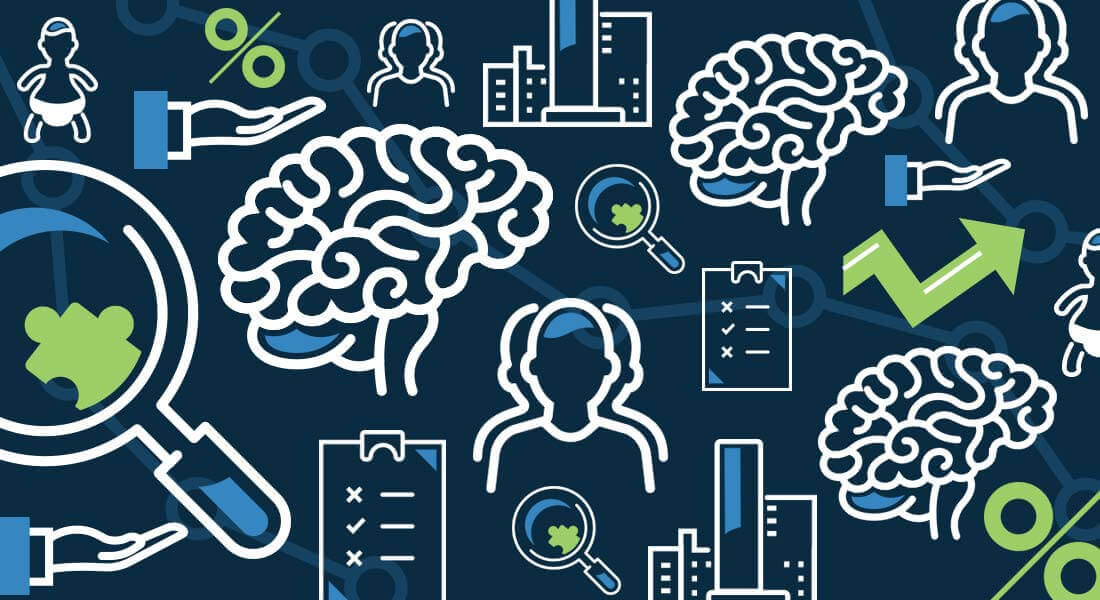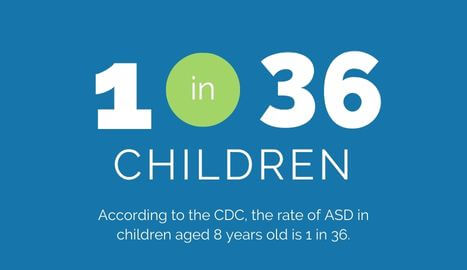1 in 36 Children Have Autism: What the Increased Prevalence Means for Your Family
April 01, 2023
April 01, 2023

You may have noticed some autism statistics lately that made you look twice, as the Centers for Disease Control and Prevention (CDC) announced that an estimated 2.8% of 8-year-old children have autism spectrum disorder (ASD). According to the findings from the CDC’s most recent study, the prevalence rate increased to 1 in 36 children since the last report in 2021. Here’s a peek back at the data over the past decade:
| Year Data Collected | Year Reported | Autism Rate |
| 2020 | 2023 | 1 in 36 |
| 2018 | 2021 | 1 in 44 |
| 2016 | 2020 | 1 in 54 |
| 2014 | 2018 | 1 in 59 |
| 2012 | 2016 | 1 in 69 |
At a glance, this increase in prevalence may seem shocking to some, so we turned to some of our Hopebridge leadership and clinicians to provide more context and address some key questions, such as:
“Is autism becoming more common?”
“Are some racial or ethnic groups more likely to have autism than others?”
“How will the increase in autism prevalence affect treatment?”
The CDC’s Autism and Developmental Disabilities Monitoring (ADDM) Network is the tracking system used to provide estimates of the prevalence and characteristics of ASD for this report. It is the largest population-based program to monitor autism and the only autism tracking system that examines health and education records.
Before we dive into the data, it’s significant to note the ADDM derived this information in 2020. We don’t yet know what the numbers are for 2022, of which we can expect to have more updates in a couple years.
Another aspect to remember about the new CDC report is the “1 in 36” ratio is an estimated rate of autism in the United States, based on the 11 states that were surveyed (diverse communities in Arizona, Arkansas, California, Georgia, Maryland, Minnesota, Missouri, New Jersey, Tennessee, Utah and Wisconsin).
The ADDM covered more than 200,000 8-year-old children for this study, so the numbers should not be taken lightly. However, the data collected is not nationally representative and does not necessarily reflect the population of the United States as a country as there are wide discrepancies between states. Estimates ranged from 1 in 43 in Arkansas and Maryland, to 1 in 22 in California. When comparing the reporting stats, we should not assume California has more people with autism than the others; it is likely the state offers better access to diagnostic services.

What are some of the possible reasons for the increased prevalence? In short, we do not think that autism itself is becoming more common, but rather that our communities are more aware of autism.
“Better awareness and access to services has likely led to this increased identification of autism over the years. As families and pediatricians alike are more informed on autism, they are more in tune with the signs of autism and more apt to have children screened during well-child visits and formally evaluated,” said Hopebridge Chief Clinical Officer Jana Sarno. “Neurodiversity acceptance also likely a role, as there is less stigma associated with seeking or receiving an autism diagnosis than there was in the past.”
Though the reported median age of identification has not fluctuated much over the years, the CDC found that more children were identified as having autism at early ages than in the past, as 49% were evaluated by age 36 months. This is more evidence that early identification has dramatically improved over recent years, though we believe progress is still necessary to get children the support they need during their key developmental years, as many do not receive a diagnosis until they are school-aged.

These data shows disparities in the prevalence of medical diagnoses between racial and ethnic groups. Though autism occurs among all racial, ethnic and socioeconomic groups, historically, non-White children, females and those from rural or disadvantaged socio-economic backgrounds have been diagnosed in later years or were often missed completely.
This year’s report is the first time we are seeing the prevalence of autism amongst Asian-American and Pacific Islander (AAPI), Hispanic, and Black children as higher than that of their White peers and those of more than one race. As there is no reason to believe autism prevalence would vary by race or ethnicity, the results of the 2020 survey are evidence that awareness, identification and support efforts may have increased amongst typically underserved areas and groups.
It’s important to note that although the prevalence of autism in Black, Hispanic and AAPI children has caught up and surpassed that of White children over the years, the work for these groups is not finished. Researchers from Boston University School of Medicine conducted another study that found Black children are still five times less likely than White children to receive early intervention services.
“We are pleased that access to diagnosis is finally coming to historically under-resourced communities because children need an autism diagnosis to get access to interventions like applied behavior analysis, but we must not stop there, as there is still a profound need in both areas,” said Jana. “At Hopebridge, we continue to partner with our communities so all children can receive the quality, effective care they deserve, especially during those prime early developmental years.”
Hopebridge recommends families learn from and act on these new data by seeking answers around any questions they have related to their children’s development. Parents and caregivers should equip themselves with the signs of autism so they can discuss their child’s development and any concerns with the pediatrician, as well as look into formal autism testing. Some of the common early symptoms of autism include:
“While access to diagnostic services has improved and become more available, the ability to get children treatment is still lacking in many areas. Once they get a diagnosis, they are often missing an effective network to get them to the next step and obtain therapy. As the number of autism diagnoses increases, waitlists will undoubtedly also continue to expand, as there are not enough therapy providers to keep up with the need,” said Hopebridge Founder, Kim Strunk.
Not only do the CDC reports display the importance of identification, but they underscore the growing need for additional autism services like ABA, speech therapy and occupational therapy to further support these children and their families.
“The results of this study speak to the Hopebridge mission—it’s why we do what we do. It’s why we started in Kokomo, Indiana, and it’s why we have since made it a priority to bring quality services to areas that were otherwise missing these essential services. It’s why our intention has always been to serve at a greater capacity and why we push to accept Medicaid in every location,” said Kim. “And it’s why we won’t slow down on fighting for more opportunities for these children.”
We can’t predict what future years will say. As science and technologies advance and we gain more access to diagnostics and awareness of the developmental markers and delays, we may continue to see the rate rise until it finally plateaus. Until then, we must carry on sharing the stories of our children and educate the communities about autism and resources available, so no one is left out from the care they would like to receive.
Each child with autism is more than a number to us. With interdisciplinary services in locations across the country, we treat each child like the individual they are, with personalized programs suited for their specific areas of opportunity, strengths and goals. If your family is affected by autism, or you believe your child could benefit from our services, don’t hesitate to reach out to us.
*Informed consent was obtained from the participants in this article. This information should not be captured and reused without express permission from Hopebridge, LLC. Testimonials are solicited as part of an open casting call process for testimonials from former client caregivers. Hopebridge does not permit clinical employees to solicit or use testimonials about therapeutic services received from current clients (Ethics Code for Behavior Analysts 5.07-5.08; BACB, 2020). Hopebridge does not provide any incentives, compensation, or renumeration for testimonials provided by a former client or client caregiver.
Autism Therapy
January 24, 2022
What the Increased Prevalence of Autism in Children Means for Your Family